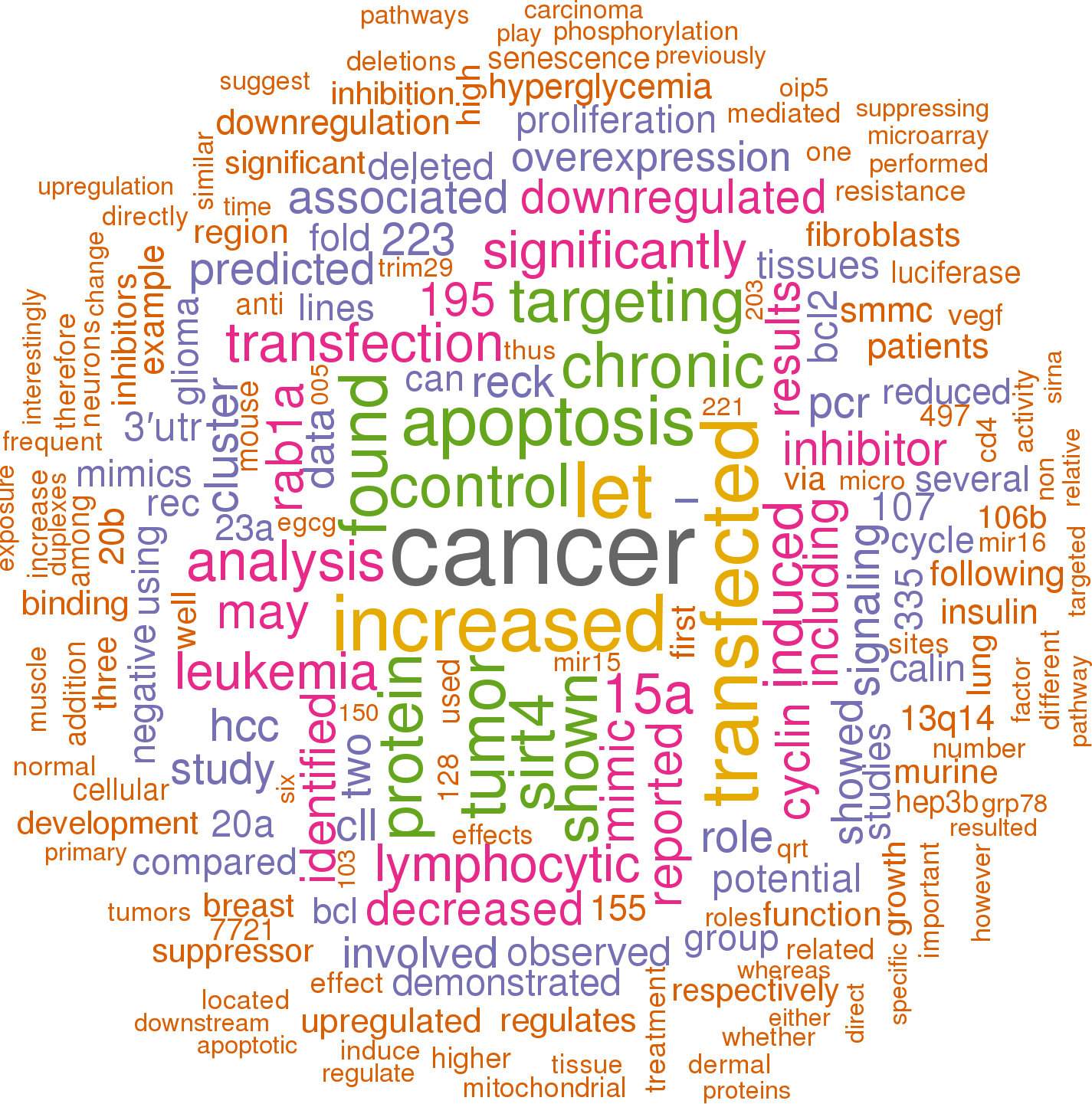Accession
MI0000438
Symbol
HGNC:
MIR15B
Description
Homo sapiens
hsa-mir-15b precursor miRNA
Gene family
MIPF0000006;
mir-15
Summary
Caution, this is an AI generated summary based on literature. This may have errors. ?
Hsa-mir-15b is a microRNA that has been studied in relation to its expression in CD34+ HSCs [PMC4669904]. One study found that the expression of Sall4, a transcription factor, was inversely correlated with the expression of hsa-mir-15b and hsa-miR-219-5p in CD34+ HSCs [PMC4669904]. Another study evaluated the performance of different miRNAs as potential biomarkers and found that hsa-mir-15b had an area under the ROC curve (AUROC) of 0.726 [PMC9279521]. The AUROC is a measure of how well a biomarker can distinguish between different groups, with values closer to 1 indicating better performance [PMC9279521]. The study also reported AUROC values for other miRNAs, such as hsa-mir-200c (0.784), hsa-mir-141 (0.894), and hsa-mir-16-2 (0.752) [PMC9279521]. These findings suggest that hsa-mir-15b may play a role in regulating gene expression in CD34+ HSCs and could potentially be used as a biomarker for certain conditions or diseases [PMC4669904] [PMC9279521]. However, further research is needed to fully understand its function and potential clinical applications [PMC4669904] [PMC9279521].
Literature search

405 open access papers mention hsa-mir-15b
(1510 sentences)
(1510 sentences)
Sequence
476877
reads,
5285
reads per million, 129 experiments
uugaggccuuaaaguacugUAGCAGCACAUCAUGGUUUACAugcuacagucaagaugCGAAUCAUUAUUUGCUGCUCUAgaaauuuaaggaaauucau
.((((.(((((((...(((.(((((((.((.(((((((.(((.((.......))))).))))))).)).))))))).)))...)))))))...)))).
.((((.(((((((...(((.(((((((.((.(((((((.(((.((.......))))).))))))).)).))))))).)))...)))))))...)))).
Structure
u --g gua U C C A g ac ugag ccuuaaa cug AGCAGCA AU AUGGUUU CAu cu a |||| ||||||| ||| ||||||| || ||||||| ||| || g acuu ggaauuu gAU UCGUCGU UA UACUAAG gua ga u u aaa aaa C U U C - ac
Annotation confidence
High
Do you think this miRNA is real?
Comments
This miRNA sequence was predicted based on homology to a verified miRNA from mouse [1]. Michael et al. subsequently verified expression of miR-15b in human [2].
Genome context
chr3: 160404588-160404685 [+]
Clustered miRNAs
1 other miRNA is < 10 kb from hsa-mir-15b
| Name | Accession | Chromosome | Start | End | Strand | Confidence |
|---|
Disease association
hsa-mir-15b is associated with one or more human diseases in the Human microRNA Disease Database
| Disease | Description | Category | PubMed ID |
|---|
Mature hsa-miR-15b-5p
| Accession | MIMAT0000417 |
| Description | Homo sapiens hsa-miR-15b-5p mature miRNA |
| Sequence | 20 - UAGCAGCACAUCAUGGUUUACA - 41 |
| Evidence |
experimental
cloned [2-5] |
| Database links |



|
| Predicted targets |



|
Mature hsa-miR-15b-3p
| Accession | MIMAT0004586 |
| Description | Homo sapiens hsa-miR-15b-3p mature miRNA |
| Sequence | 58 - CGAAUCAUUAUUUGCUGCUCUA - 79 |
| Evidence |
experimental
cloned [4-5] |
| Database links |



|
| Predicted targets |



|
References
|



